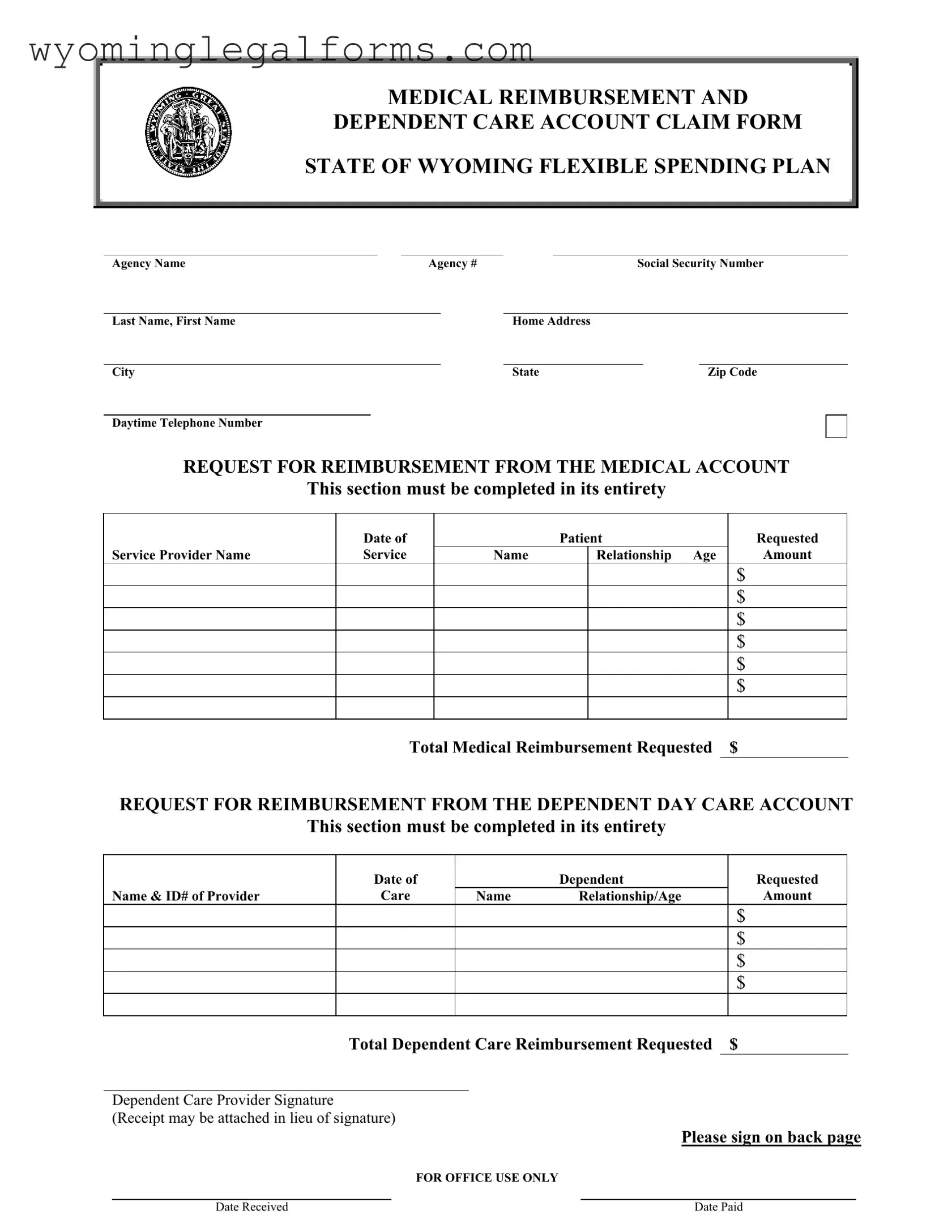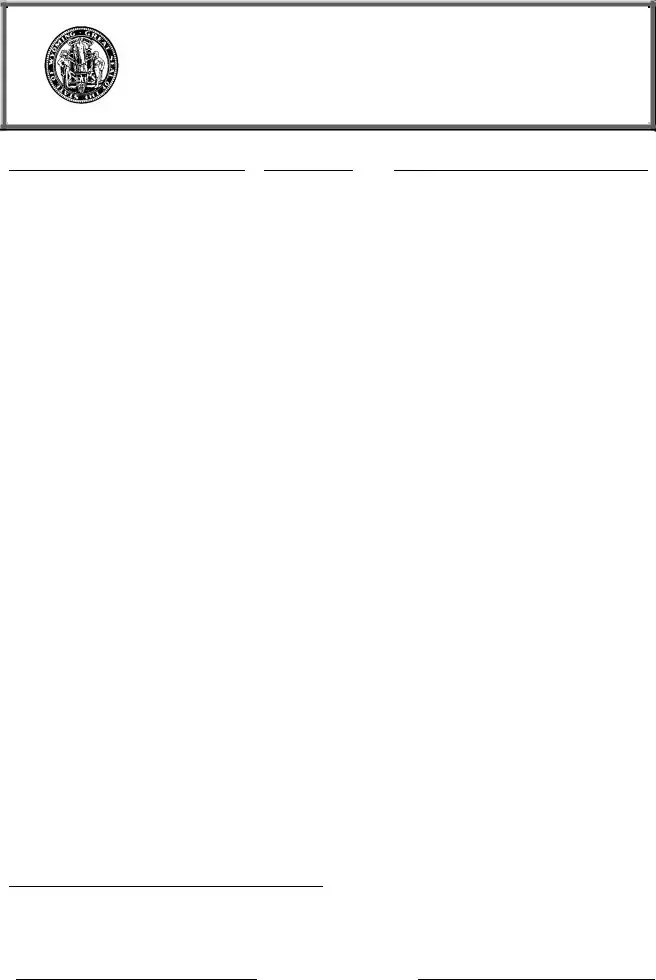What is the Wyoming Medical Reimbursement form used for?
The Wyoming Medical Reimbursement form is designed for employees to request reimbursement for eligible medical and dependent care expenses. This form allows you to submit claims for qualified medical expenses that are not covered by any other insurance. Additionally, it can be used to seek reimbursement for dependent care costs, which are necessary for you to maintain employment. It's important to ensure that all sections of the form are completed accurately to facilitate a smooth reimbursement process.
What expenses are eligible for reimbursement under the Medical Reimbursement section?
Eligible expenses include qualified medical and dental costs incurred by you, your spouse, and your dependents. However, these expenses must not be covered by any other source, such as health insurance. Common examples of eligible expenses include co-pays, deductibles, and certain treatments not fully covered by insurance. A detailed list of IRS-approved medical and dental expenses can be found in the Flexible Benefit Plan Summary, which can help you determine what can be claimed.
How often can I submit claims for reimbursement?
You can submit claims for reimbursement at any time throughout the year. Reimbursements are processed semi-monthly, meaning you can expect checks to be issued two times each month. To avoid delays, make sure that all required documentation, such as itemized invoices and explanations of benefits from your insurance, are attached to your claim. This will ensure that your claims are processed efficiently and accurately.
What should I do if my reimbursement request is denied?
If your reimbursement request is denied, it’s essential to review the reasons provided. Often, denials occur due to missing documentation or ineligible expenses. You can contact the Employees’ Group Insurance Office for clarification and assistance. They can help you understand the specific reasons for the denial and guide you on how to correct any issues. Remember, any expenses deemed ineligible by the IRS may be subject to taxation, so it’s crucial to ensure all submitted claims comply with the guidelines.


